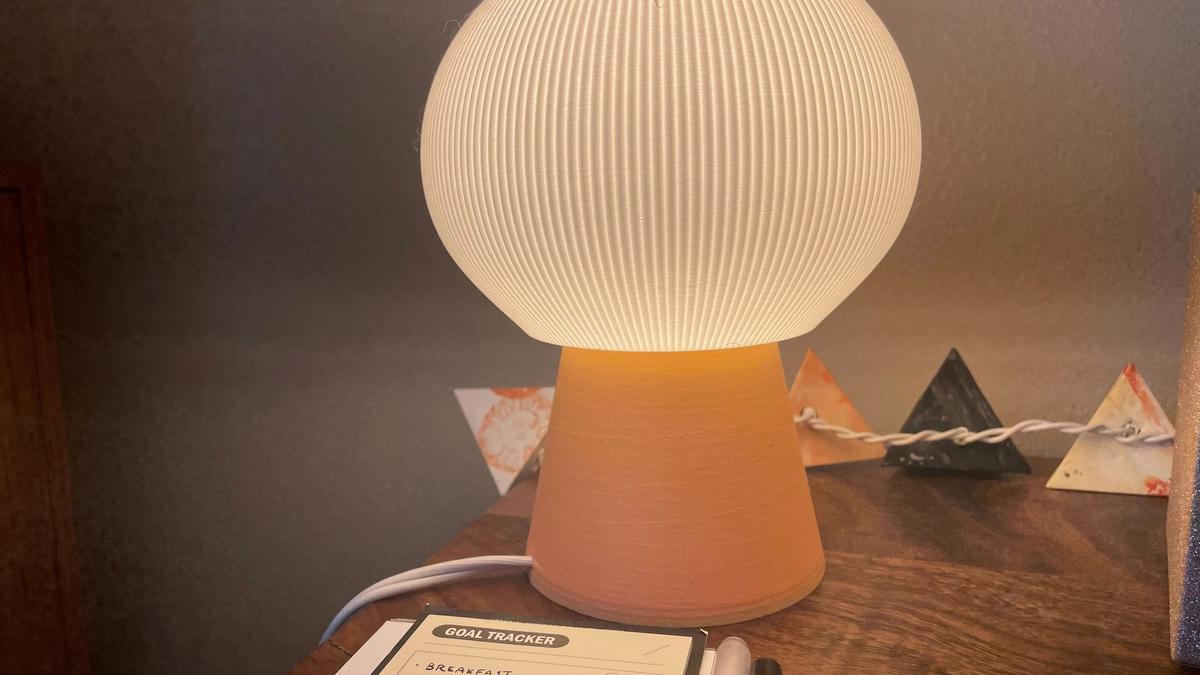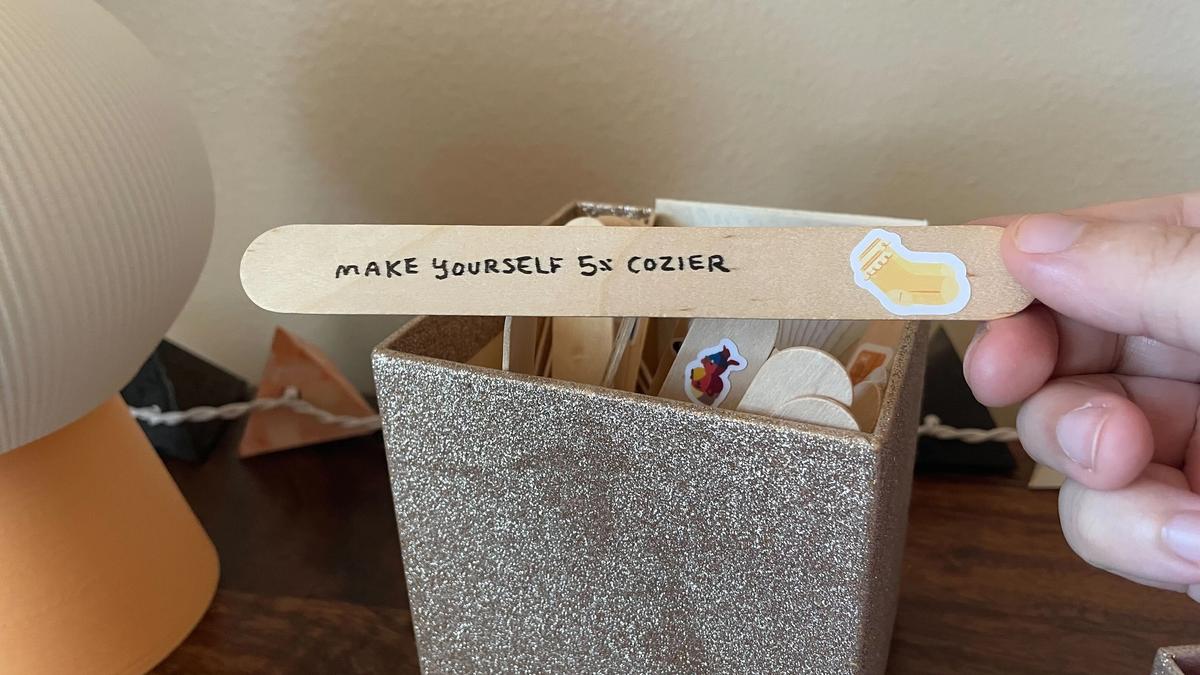
5 Tips For an ADHD-Friendly Workspace
Can a few simple additions to your workspace really make a difference in managing ADHD?
Another day, another struggle to stay focused, energized, and emotionally regulated while you work... right?
Maybe not!
For many ADHDers, feeling supported during the workday may not be the "Ritalin or bust" approach, where you either take stimulant medication or you're out of luck.
In fact, many of the challenges we face can be accommodated with the right tools and approach.
As a former ADHD coach and curriculum writer who also lives with ADHD, I can attest to the fact that these small but mighty workspace accommodations can make a real difference.
If you're looking to make your day-to-day work experience feel a little more supported, these are a few of my favorite desk additions.
1. For Energy: Access to Consistent, Easy Nutrition

What it is
I've added a mini-fridge to my workspace, along with a recurring subscription for my favorite nutritional shakes, so that I always have an easy snack within reach.
How it helps
We need snacks — but we often aren't eating them!
Many people with ADHD experience "hyperfocus," where our attention becomes so absorbed, we struggle to transition from one task to another. This means snacks tend to go to the wayside, leaving us hangry and unfocused by the middle of the day.
Why it works
A mini-fridge with drinkable nutrition makes it easier to snack without requiring us to transition to a separate activity, breaking our focus.
Low-cost alternatives
I chose a mini-fridge that's smaller and designed for skincare products to save on cost.
But if a fridge isn't within your budget, you might also consider a box or tote bag of snacks that hangs from the edge of your desk, or using a thermos to keep your shake or smoothie cold for longer.
Bonus tip
For bonus points, add a calendar event or alarm to prompt you to reach for your snack — whichever you're less likely to ignore!
2. For Vibes: Lighting That's Easy On the Eyes

What it is
I have a warmer, gentler lamp at my desk for when I work in the evening. I find softer lighting to be less activating and harsh, making it easier to settle and focus.
How it helps
Many of us with ADHD are sensitive to distractions in our environment, and especially for those of us who also have autism, we may even find certain kinds of light to be overstimulating.
Why it works
It's subjective! Generally speaking, lights with warmer tones can feel more soothing, but it depends on the individual.
Low-cost alternatives
Is there a lamp you already have that you could switch out the bulbs for? Some light bulbs are designed to have a warmer hue, and can easily be swapped out to make your lighting feel less harsh (try searching "warm light bulb" if you don't know where to start!).
Bonus tip
If you're someone who gets absorbed in your work and you forget to stop, you might try finding a lamp that works on a timer and shuts off after a certain amount of time. Sometimes the visual reminder can help us break our focus!
3. For Soothing: A Self-Care Ideas Box

What it is
This box includes all of my favorite self-care activities. Some of them are easy and only take a few minutes, while others are a little more involved.
I like the novelty of pulling a stick, not knowing what I'll get! This keeps me engaged and likely to take shorter, more intentional breaks.
How it helps
Sometimes people with ADHD resist taking breaks because we're afraid it will disrupt our focus or get us too sidetracked. But we aren't robots! Taking breaks throughout the day can be a helpful reset.
Why it works
We may default to scrolling on our phones when we need a break, which is great if it helps, but can make some of us feel more tired and overwhelmed, and doesn't signal to us when we should stop.
A self-care box encourages us to try activities that will boost our mood and have a clear stopping point (like "drink a glass of water" or "stretch for 10 minutes") so we aren't completely lost to our phones.
Low-cost alternatives
You might create a paper list with fewer options if you find the popsicle sticks to be overwhelming, and use dice or a coin to decide what activity you'll do.
Bonus tip
If there are care tasks you're trying to weave into your day, like getting some sun on your face or moving your body, you can include them in your list!
4. For Stimulation: A Collection of Fidgets and Treats

What it is
I keep a collection of fidget toys and stims within reach, particularly for moments when I feel underwhelmed and unfocused, and need something to lift me up.
How it helps
Stimulation — or, activities that are enlivening and engage us mentally, emotionally, and/or physically — is a very human need.
For neurodivergent humans especially, these stimulatory activities and behaviors can help ground and soothe us, too. Having stimulating items nearby can make this more accessible in moments when it's needed most!
Why it works
There's evidence to suggest that stimming increases focus for ADHDers, because it helps arouse areas of the brain that tend to be less active.
The "why" is less important than the "what," though. You might experiment with different types of items to see what feels good for you!
Low-cost alternatives
You don't need the fanciest stim toys on the market!
Try starting with something you can touch (it could be a rock that feels cool or a squish toy from a vending machine), something you can taste (like chewing gum or sour candies), and something you can smell (most folks find that citrus and spicy scents are more uplifting, but your mileage may vary!).
Bonus tip
Find a therapist or prescriber who specializes in ADHD.
Alma’s directory has over 20,000 providers, including those who specialize in ADHD. Schedule a free consultation (or several!) with therapists and/or prescribers who can support you in your journey.
5. For Support: A 'Stuck Pile' When Nothing's Getting Done

What it is
This is a pile of tools that are supportive specifically when you're stuck — meaning, when you don't know where to start, you're too overwhelmed to start, or you need to get organized before you can begin something.
How it helps
My stuck pile addresses the places where I personally get stuck the most!
- A yes/no coin (for when I need to make a quick decision but I'm overthinking it)
- A task organizer (to help me decide what to prioritize that day — it also has a pomodoro tracker!)
- A project planner (to break down larger projects when I'm overwhelmed)
- My Anti-Planner (a book of ADHD coping tools designed for tackling tasks when you're experiencing high resistance)
Why it works
So often when we procrastinate, it's because the distraction was more available and approachable than the support. By keeping this pile right on your desk, you'll know exactly what to do when you're stuck!
Low-cost alternatives
Instead of a pile, you might have a list of steps to follow when you're feeling stuck or overwhelmed.
If you work on a computer, you might create a bookmarks folder of different digital resources that support you when you're unable to get started on something!
Bonus tip
Maybe instead of using your stuck resources only when you hit a wall, you might use them at the start of each day!
Take What Works (And Leave the Rest!)
Your desk doesn't need to look like mine to be an ADHD-friendly workspace! The only person it needs to work for is you.
If these suggestions don't feel supportive, you might start by listing out different tools and strategies that address each of the feelings I've listed below.
Ask Yourself: What Do I Need?
- Feeling fatigued? Reach for a snack! Your “3 PM slump” might just mean you’re hungry.
- Feeling overstimulated? Adjust your environment (lighting, seating, temperature, etc).
- Feeling dysregulated or emotional? Try taking a break with your self-care box or list.
- Feeling underwhelmed or bored? Reach for a stim or fidget (something you can touch, taste, and/or smell!).
- Feeling stuck? Use a tool from your “stuck pile” (like a task organizer, yes/no decision coin, or Anti-Planner book).
Jul 18, 2024

Looking for a therapist?
Get tips on finding a therapist who gets you.
By submitting this form, you are agreeing to Alma's privacy policy.



